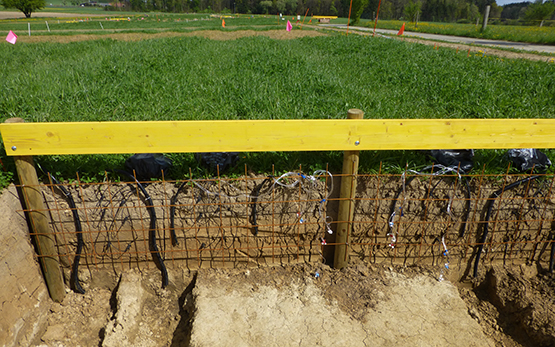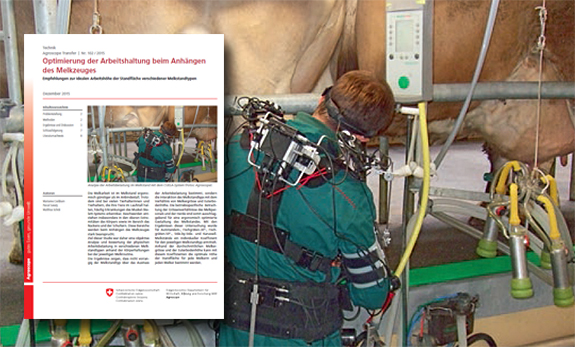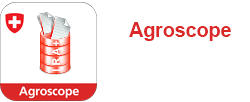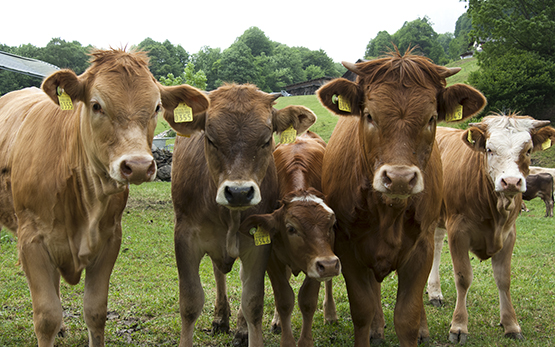Hendricks J., Reiche A.-M., Eichinger J., Siegenthaler R., Eggerschwiler L., Silacci P., Dohme-Meier F.
Effect of a subclinical ketosis challenge on biomarkers of energy metabolism and liver function and their variability in dairy cows during the transition period.
In: 79th Conference of the Society of Nutrition Physiology. 4 - 6 March, Hrsg. Society of Nutrition Physiology, Göttingen (DE). 2025, 116.
Hendricks J., Reiche A.-M., Eichinger J., Siegenthaler R., Eggerschwiler L., Silacci P., Dohme-Meier F.
Effect of a subclinical ketosis challenge on biomarkers of energy metabolism and liver function and their variability in dairy cows during the transition period.
In: 79. Tagung der Gesellschaft für Ernährungsphysiologie. 6. März, Hrsg. Gesellschaft für Ernährungsphysiologie, Göttingen (DE). 2025.
Bernier Gosselin V., Fernandez J.E., Ollagnier C., Morel I., Siegenthaler R., Collaud A., Meylan M., Perreten V.
Whole-genome sequencing-based antimicrobial resistance and shedding dynamics ofEscherichia coliisolated from calves before and after antimicrobial group treatments.
Microbiology Spectrum, 12, (4), 2024, Artikel 03214-23.
Silacci P., Morel I., Dubois S., Siegenthaler R., Joye C., Lerch S.
Qualité sensorielle et nutritionnelle de la viande de taurillons croisés nourris avec des régimes intensifs ou semi-intensifs.
In: Rencontres Recherches Ruminants (27e édition). 4 - 5 décembre, Hrsg. IDELE / INRAE, Paris (FR). 2024, 236.
Kasper-Völkl C., Schori F., Ampuero Kragten S., Raemy M., Siegenthaler R., Rothacher M., Eggerschwiler L.
Laufende Untersuchung des genetischen Hintergrunds der Stickstoffnutzungseffizienz und der Methanemissionen bei Schweizer Milchkühen: Erste Ergebnisse.
In: Liebefelder Milchtagung. 19. November, Hrsg. Agroscope / HAFL, Zollikofen (CH). 2024.
Kasper-Völkl C., Schori F., Ampuero Kragten S., Raemy M., Siegenthaler R., Rothacher M., Eggerschwiler L.
EffNMilk: Genetische Grundlagen der Stickstoffnutzungseffizienz beim Milchvieh: Erste Ergebnisse.
In: Nutztiertagung. 26. September, Hrsg. Agroscope, Grangeneuve (CH). 2024.
Morel I., Dohme-Meier F., Siegenthaler R., Hayoz B., Xavier C., Lerch S.
Protein self-sufficiency and nitrogen use efficiency in beef-on-dairy crossbred bulls.
In: Book of Abstracts of the 75th Annual Meeting of the European Federation of Animal Science. 1 September, Hrsg. EAAP, Firenze. 2024, 821-821.
Wang K., Räisänen S. E., Eggerschwiler L., He T., Islam M. Z., Li Y., Ma X., Siegenthaler R., Zeng Z., Dohme-Meier F., Niu M.
Feed intake regulation stabilized daily pattern of intake with little impact on rumen fermentation or methane mitigating efficacy of 3-nitrooxypropanol (3-NOP) in dairy cows.
In: ADSA Annual Meeting. 16-19 June, Hrsg. American Dairy Science Association, West Palm Beach, Florida (US). 2024, 78.
Lerch S., Siegenthaler R., Numata J., Moenning J.-L., Dohme-Meier F., Zennegg M.
Accumulation rate, depuration kinetics, and tissue distribution of polychlorinated dibenzo-p-dioxins and dibenzofurans (PCDD/Fs) in suckler ewes (Ovis aries).
Journal of Agricultural and Food Chemistry, 72, (26), 2024, 14941-14955.
Siegenthaler R., Gobet T., Lerch S.
Schätzung des Körperfettgehaltes beim lebenden Mutterschaf.
Forum Kleinwiederkäuer = Petits ruminants, 5, 2024, 13-19.
weitere Sprachen:
französisch
Xavier C., Morel I., Siegenthaler R., Dohme-Meier F., Dubois S., Luginbühl T., Le Cozler Y., Lerch S.
Three-dimensional imaging to estimate in vivo body and carcass chemical composition of growing beef-on-dairy crossbred bulls.
Animal, 18, (6), 2024, 1-13.
Wang K., Räisänen S.E., Eggerschwiler L., He T., Islam M.Z., Li Y., Ma X., Siegenthaler R., Zeng Z., Dohme-Meier F., Niu M.
Feed intake regulation stabilized daily intake pattern but reduced lactational performance with little impact on rumen fermentation or efficacy of 3-nitrooxypropanol (3-NOP) in dairy cows.
In: Role of animal nutrition in sustainability goals for Switzerland and beyond. 23 May, Hrsg. ETH Zürich. 2024, 42.
Démoulins T., Yimthin T., Lindtke D., Eggerschwiler L., Siegenthaler R., Labroussaa F., Jores J.
Temperature impacts the bovine ex vivo immune response towards Mycoplasmopsis bovis.
Veterinary Research, 55, 2024, 1-22.
Xavier C., Morel I., Dohme-Meier F., Siegenthaler R., Le Cozler Y., Lerch S.
Estimation of carcass chemical composition in beef-ondairy cattle using dual-energy X-ray absorptiometry (DXA) scans of cold half-carcass or 11th rib cut.
Journal of Animal Science, 101, 2023, 1-12.
Kasper-Völkl C., Schori F., Ampuero S., Hayoz B., Siegenthaler R., Eggerschwiler L.
The genetic background of nitrogen use efficiency and methane emissions in Swiss dairy cows: Ongoing activities at Agroscope.
In: Agro-Vet Strickhof-Tagung. 7. November, Lindau. 2023, 1.
Morel I., Dieudonné A., Siegenthaler R., Xavier C., Lerch S.
Morphology and body composition of beef-on-dairy heifers along compensatory growth itinerary.
In: 74th Annual Meeting of the European Federation of Animal Science. 26 August - 1 September, Hrsg. EAAP, Lyon (FR). 2023, 679.
Lerch S., Silacci P., Cantalapiedra-Hijar G., Siegenthaler R., Dubois S., Delavaud A., Bonnet M., Morel I.
Blood metabolite, hormone and 𝛿13C turnover kinetic during compensatory growth of crossbred heifers.
In: 74th EAAP Annual Meeting. 28. August, Hrsg. EAAP, Lyon (FR). 2023, 685.
Lerch S., Silacci P., Cantalapiedra-Hijar G., Siegenthaler R., Dubois S., Delavaud A., Bonnet M., Morel I.
Blood metabolite, hormone and 𝛿13C turnover kinetic during compensatory growth of crossbred heifers.
In: Book of abstracts of the 74th Annual meeting of the European Federation of Animal Science. 26 August - 1 September, Hrsg. EAAP, Lyon (FR). 2023, 685.
Hayoz B., Morel I., Dieudonné A., Rothacher M., Siegenthaler R., Dohme-Meier F., Lerch S.
Feeding behavior, methane emission and digestibility of crossbred heifers along compensatory growth.
In: EAAP 2023. 30. August, Hrsg. European Federation of Animal Science, Lyon. 2023, 1.
Hayoz B., Morel I., Dieudonné A., Rothacher M., Siegenthaler R., Dohme-Meier F., Lerch S.
Feeding behavior, methane emission and digestibility of crossbred heifers along compensatory growth.
In: EAAP Conference. 07 March, Lyon. 2023, 1.









